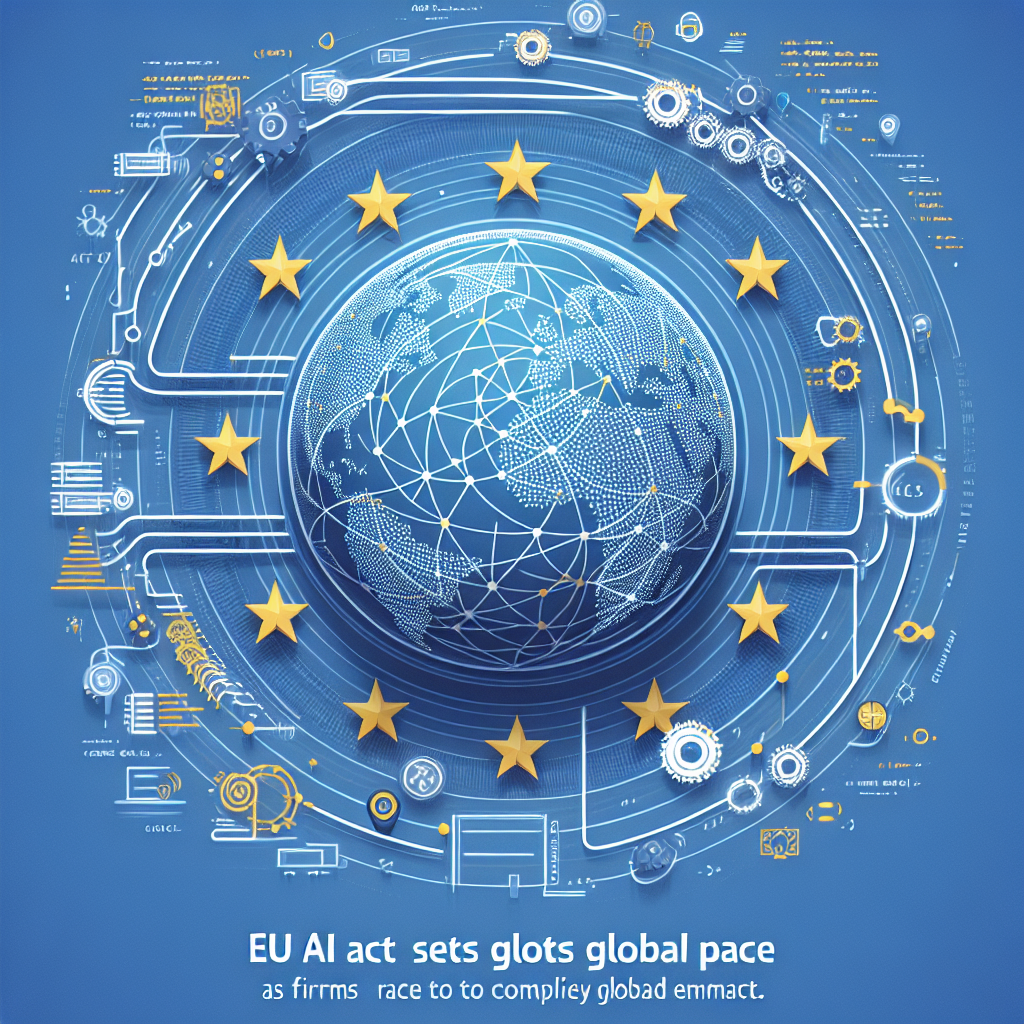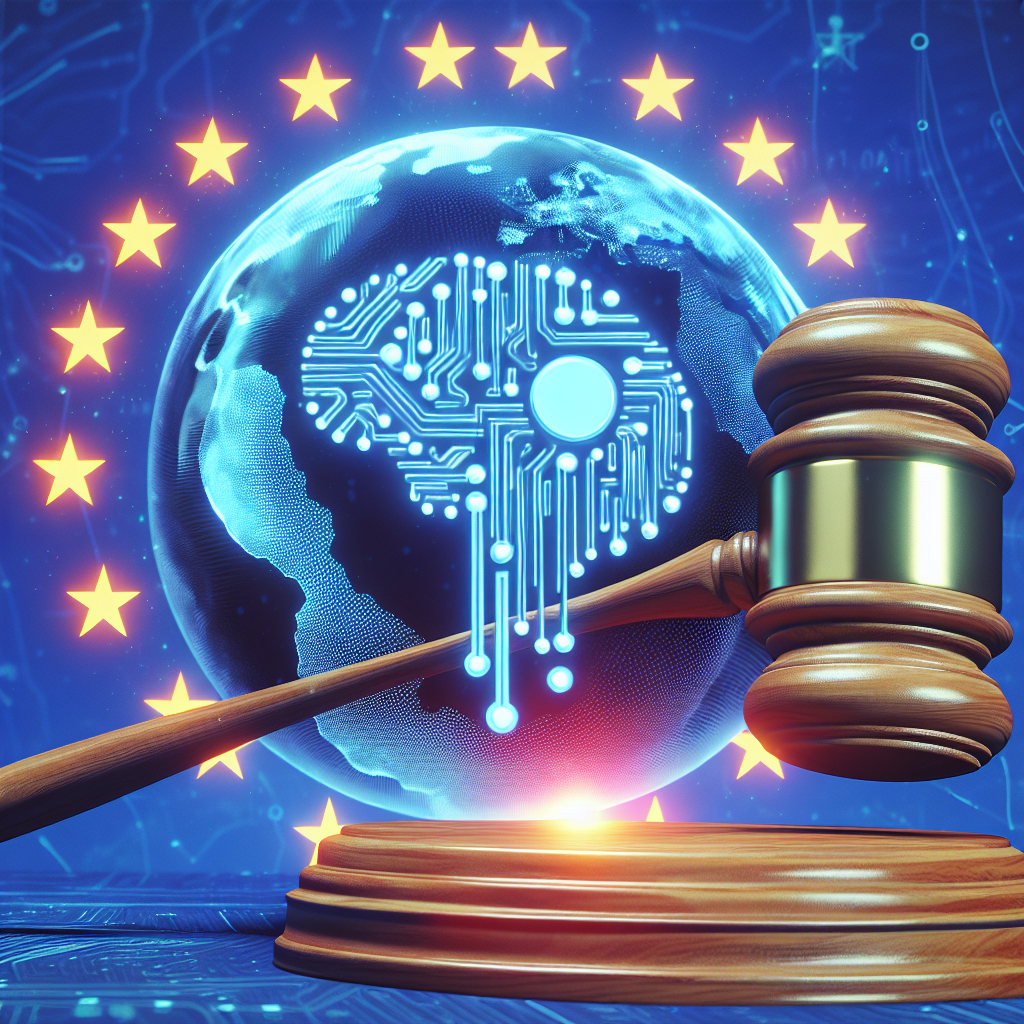EU AI Act Sets Global Bar, Industry Braces to Adapt

Europe writes the first playbook for AI
Europe has adopted the worlds first comprehensive law to govern artificial intelligence. The EU Artificial Intelligence Act, approved in 2024, introduces a risk-based regime that will phase in over the next two years. It will shape how companies build, deploy, and audit AI systems across the blocs 27 member states. The law is already influencing debates in the United States, the United Kingdom, and beyond. Supporters say it will protect rights and set clear rules. Critics warn it could slow innovation and burden smaller firms.
‘The EU becomes the first continent to set clear rules for the use of AI,’ said Thierry Breton, the European Commissions internal market commissioner, after negotiators reached a political deal in late 2023. The final text, refined in 2024, sets out detailed obligations for high-risk systems and adds new requirements for general-purpose models.
What the law does
The AI Act categorizes uses of AI by risk. Higher risk triggers stronger oversight. Some practices are banned. Others face strict controls. Lower-risk uses require transparency or carry no new duties. The approach is meant to be targeted and flexible.
- Unacceptable risk: Certain uses are prohibited. These include social scoring by public authorities and systems that manipulate people in ways that could cause harm. The law also tightly restricts real-time remote biometric identification in public spaces, allowing narrow exceptions for law enforcement under judicial control.
- High risk: AI used in sensitive contexts faces rigorous requirements. This covers areas such as critical infrastructure, employment, education, law enforcement, migration, access to essential services, and the administration of justice. Providers must implement risk management, high-quality datasets, logging, transparency, human oversight, robustness, and cybersecurity. Many systems must pass a conformity assessment and carry a CE marking before entering the EU market.
- Limited risk: Some systems must disclose they are AI. Chatbots must make their nature clear. Deepfakes must be labeled unless used for lawful policing or research with safeguards.
- Minimal risk: Most AI, such as spam filters or video game AIs, faces no extra rules beyond existing law.
The Act also sets hefty penalties. Violations of banned practices can draw fines up to 7% of global annual turnover or 835 million, whichever is higher. Other breaches carry lower, but still significant, fines. National authorities will enforce the rules. A new AI Office in the European Commission will coordinate oversight and handle general-purpose AI.
Generative AI gets special attention
Lawmakers added tailored duties for general-purpose AI (GPAI), including large language models. Providers must prepare technical documentation, summarize the use of training data, and respect EU copyright rules. The most capable models those posing systemic risks due to scale or reach face extra guardrails. These include model evaluations, adversarial testing, incident reporting, and cybersecurity commitments.
Proponents say these steps foster trust and reduce harmful uses, such as AI-driven fraud or disinformation. Companies say some requirements remain unclear and could evolve with technical standards. The Act relies on EU and international standards bodies to specify detailed methods for testing, monitoring, and reporting. That process is underway. Industry groups want harmonized guidance to avoid divergent national interpretations.
Industry weighs compliance and cost
Large tech firms have said they will comply but seek clarity on audits, legal liability, and the scope of ‘systemic risk.’ Startups fear that compliance costs will favor incumbents. They want sandboxes and support to test products in a controlled way. EU policymakers included regulatory sandboxes and reduced fees for small firms in some cases to address these concerns.
Many developers view regulation as inevitable as models scale. ‘We think that regulatory intervention by governments will be critical to mitigate the risks of increasingly powerful models,’ OpenAI chief executive Sam Altman told U.S. senators in 2023. Advocates for consumer protection argue rules will prevent a race to the bottom on safety.
Global ripple effects
The EU law lands amid broader moves on AI safety and governance. In the United States, President Joe Biden signed an executive order in October 2023 directing agencies to set new AI safety and security standards. It calls for testing of the most advanced models and stronger protections for privacy and civil rights. The National Institute of Standards and Technology released a voluntary AI Risk Management Framework in 2023. In 2024, NIST launched a consortium to help develop testing and evaluation tools.
The United Kingdom hosted an AI Safety Summit in late 2023 and established an AI Safety Institute to evaluate advanced models. Other countries, including Canada and Japan, are updating guidance on transparency, accountability, and data governance. The Group of Seven has endorsed principles for trustworthy AI and guidelines for generative systems. Many of these efforts mirror the EUs focus on risk and documentation.
Global companies will face a patchwork of obligations. They want interoperability between regimes to avoid duplicate audits and inconsistent standards. Regulators say coordination is growing. They point to shared technical benchmarks and cross-border working groups.
What changes when
The AI Act takes effect in phases to give time for preparation. Companies should map their systems, check risk categories, and plan updates to processes and documentation.
- Entry into force: The law entered into force in 2024 following publication in the EUs Official Journal.
- Banned practices: Prohibitions begin to apply around six months after entry into force.
- GPAI duties: Transparency and documentation for general-purpose models apply after roughly 12 months.
- High-risk systems: Most obligations for high-risk uses apply about 24 months after entry into force. Some sector rules may arrive later.
Providers must also set up post-market monitoring to catch issues after deployment. Serious incidents must be reported to authorities. Users of high-risk systems, such as employers or hospitals, have duties too. They must conduct impact assessments, ensure human oversight, and keep logs.
Open questions and next steps
Key details will come from standards and guidance. These include methods for robustness testing, bias assessment, and watermarking. The EU will update lists of high-risk uses as technology changes. Enforcement capacity will be tested, particularly for cross-border services and open-source models. Civil society groups want strong action on discriminatory outcomes and exploitative surveillance. Businesses want predictable timelines and consistent rulings.
Several trends bear watching:
- Standards and tooling: Testing benchmarks, red-teaming protocols, and secure evaluation infrastructure will matter as much as the laws text.
- Copyright and data: How courts interpret text and data mining rules, training data summaries, and opt-outs could reshape model training practices.
- Startup pathways: Sandboxes, templates, and shared audit resources could lower the cost of compliance for smaller players.
- International alignment: Moves by the U.S., U.K., G7, and OECD may converge on a common core of safety and transparency duties.
The EU wanted to lead by writing rules early. As implementation begins, that bet will be tested. If the law delivers safer, more reliable systems without stifling invention, others may follow. If compliance proves too heavy or fragmented, pressure will grow to adjust. For now, one thing is clear. Europe has set a marker. The rest of the world is watching, and preparing to adapt.































































































































































































































































































